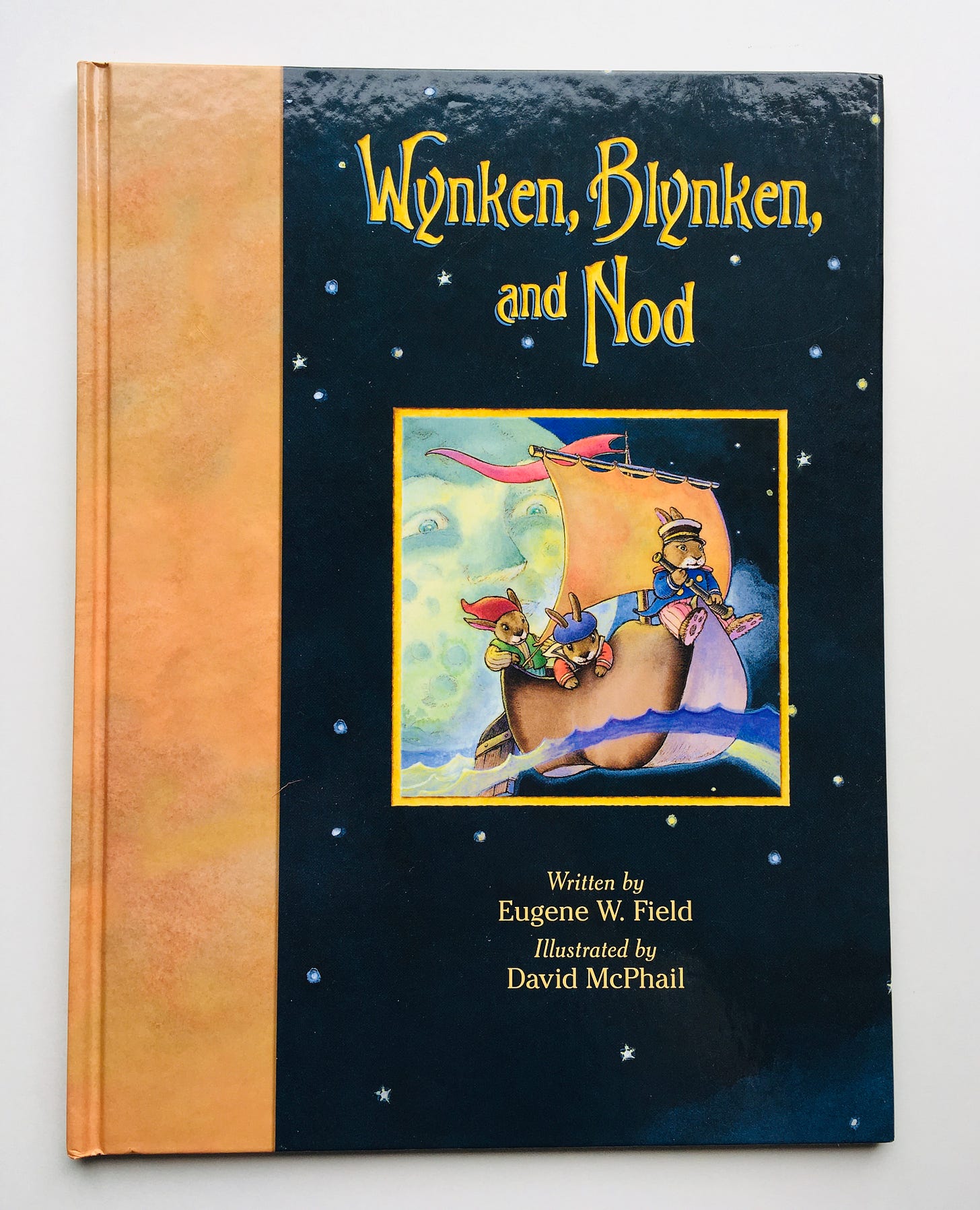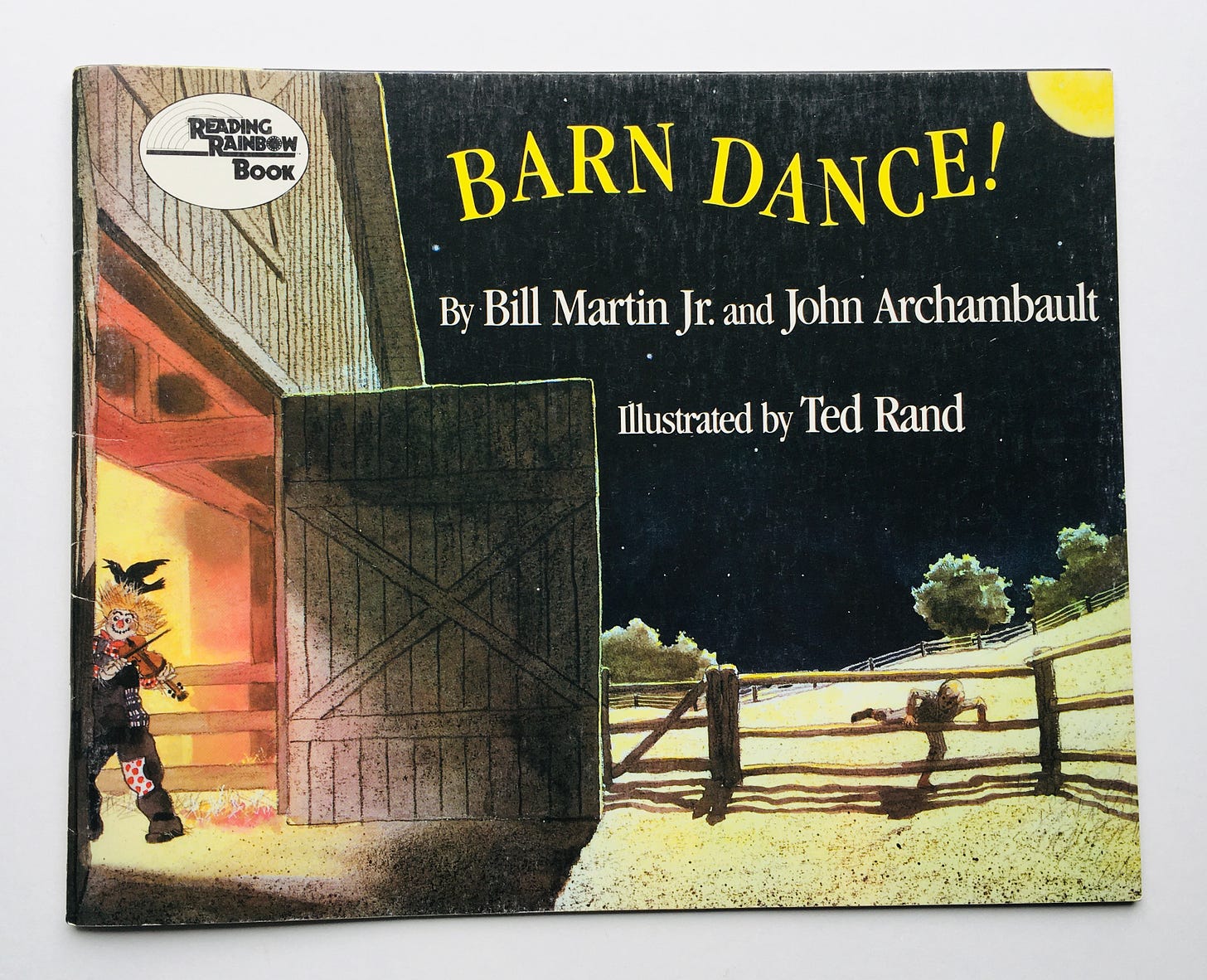Can we read? No. 4
Good morning. The Cooperative Children’s Book Center at the University of Wisconsin-Madison has released their 2019 Diversity Statistics — a report that measures, annually, the numbers of children’s and young adult books by and about BIPOC the center received in the previous year — and the numbers are grim (the numbers are always grim). Why am I sharing this? Because the statistics are interesting, for one, but because awareness of a problem is the first step to changing it.
I’ve made a pile of purchases in the past few weeks, and I’ll be covering them all in future issues. For now I want to share my favorite thus far: Just Like Me by Vanessa Brantley-Newton. It’s a poetry book focused on girls, specifically black girls, and it is absolutely full of joy. (I read a lot of poetry for both kids and adults, and this is good poetry. I love reading this aloud.)
Now for the rest…
Quick as a Cricket by Audrey Wood, illustrated by Don Wood (1982)

Audrey and Don Wood have done some fabulous collaborations together, and while this title is lesser known than some of their more famous works, it deserves a spotlight. Like The Little Mouse, The Red Ripe Strawberry, and The Big Hungry Bear and Heckedy Peg — two totally different books for totally different age groups (I highly recommend both) — Quick as a Cricket does what the best picture books should do: create a perfect marriage between the text and the illustrations. Though the story here is merely imaginative rhyme — a young boy embodies all sorts of different animals and their chief characteristics (“I’m as cold as a toad, I’m as hot as a fox, I’m as weak as a kitten, I’m as strong as an ox”) — it’s a sunny, joyous celebration of self, and that’s why I like it. Best for preschoolers, though also potentially helpful as a social-emotional learning title for slightly older readers.
Wynken, Blynken, and Nod by Eugene Field, illustrated by Johanna Westerman (1998)
Wynken, Blynken, and Nod by Eugene Field, illustrated by David McPhail (2009)


I can’t imagine trying to convince anyone that Wynken, Blynken, and Nod is both a stunning poem and an unorthodox moral feat (during a time when children’s poetry was almost exclusively used to indoctrinate young minds to Victorian values), so I’ll just say: it is absolutely worthy of knowing, and introducing to your children.
If you’re unfamiliar, the narrative centers on three nighttime adventurers as they travel the sea of the sky (the mixed metaphor here is truly breathtaking) in a wooden shoe, eventually returning home to realize,
“Wynken and Blynken are two little eyes,
And Nod is a little head,
And the wooden shoe that sailed the skies
Is a wee one's trundle-bed…”
Johanna Westerman’s version is the best of the best — her illustrations are vivid, precise, and captivating — but I can’t help loving David McPhail’s version, with its buoyant bright colors and intrepid little rabbits. (Admittedly, I love anything and everything McPhail, but he really does do a lovely job with this title.) Both versions capture the dauntless yet safe, venturesome yet calming spirit of this poem. I have to use a lot of adverbs — it’s utterly beautiful and I cannot recommend it enough. (There are many illustrated versions of this poem — get any one of them. And if bedtime poetry is a pleasure, I also recommend the collection, Wynken, Blynken, and Nod and Other Bedtime Poems, a Golden Junior Classic from 1987 edited by Linda C. Falken and illustrated by Karen Milone.)
Barn Dance by Bill Martin, Jr. and John Archambault, illustrated by Ted Rand (1986)

I have never been to a hoe-down (at least that I was aware of in the moment) and I hated the square-dancing unit in middle school gym class intensely, but Barn Dance is all the goodness of those country events without any of the awkward elbow-hooking with your embarrassed peers. On a full-moon night a skinny kid is called out into the magic by the sounds of “the wind’s violin,” which lead him to the barn where he finds a scarecrow fiddling a welcome to all the animals on the farm, “biddin’ ever’body come to a hoedown in the barn.” Don’t bother with this title if you’re not going to channel your inner hillbilly and lean right into the accent — it would come out sounding truly strange if you pronounced all the dropped g’s and d’s — but that’s the fun of it. It took me awhile to master lines like, “Out came the skinny kid, a-tickin’ an’ a-tockin’, An a hummin’ an’ a-yeein’ an’ a-rockin’ an’ a-sockin’. An’ he danced his little toe through a hole in his stockin’!” but if I want my children to enjoy language — to have fun with it, to play with it like the music that it is, to recognize the poetry of even single words — I have to be willing to go there myself, right? This is a rollicking, fun read.
Let’s Eat by Ana Zamorano, illustrated by Julie Vivas (1996)

Let’s Eat! is one of a short list of titles that depict family or community meal-time life in such a warm and loving way I just want to drop straight into the book for my next dinner (see also: the already-mentioned Feast for 10 by Cathryn Falwell; Bee-Bim Bop! by Linda Sue Park and Ho Baek Lee; Thank You, Omu! by Oge Mora; and The Tea Party in the Woods by Akiko Mayakoshi). Antonio is the youngest in his bustling, multigenerational family, and his very pregnant mother sends him out each day of the week to gather a member of their household for their evening meal. Each one has an excuse — on Monday his Papá in working in his shop, so they have to eat without him; on Tuesday his sister his learning a dance with her friends, so they have to eat without her, etc. Sprinkled with Spanish and told through the lens of traditional Spanish food, this is a rich and entertaining glimpse into one busy, talkative family’s life, and will leave readers’ stomachs — and hearts — with a full sense of satisfaction.
That’s all I’ve got today. I’m currently deep in exploration mode around math readers and other interesting math books. If you have any recommendations/thoughts, please send them my way! 🐤
If you like this newsletter, please consider forwarding this post to a friend👇 or sending them the link to subscribe. (Thank you!)

